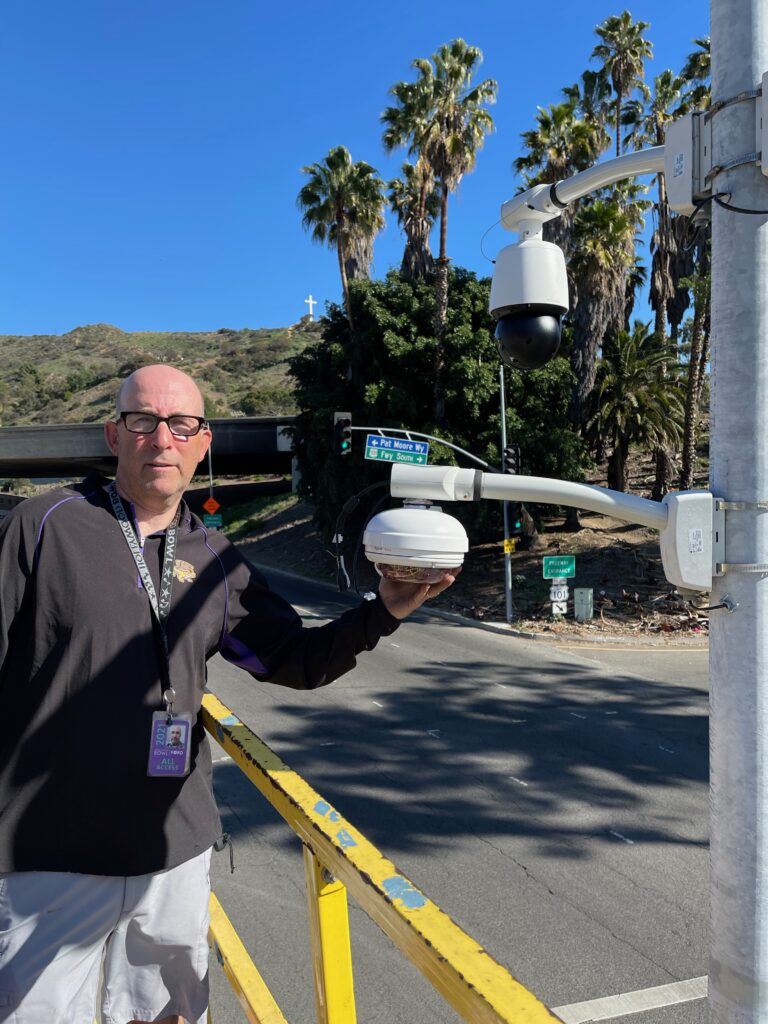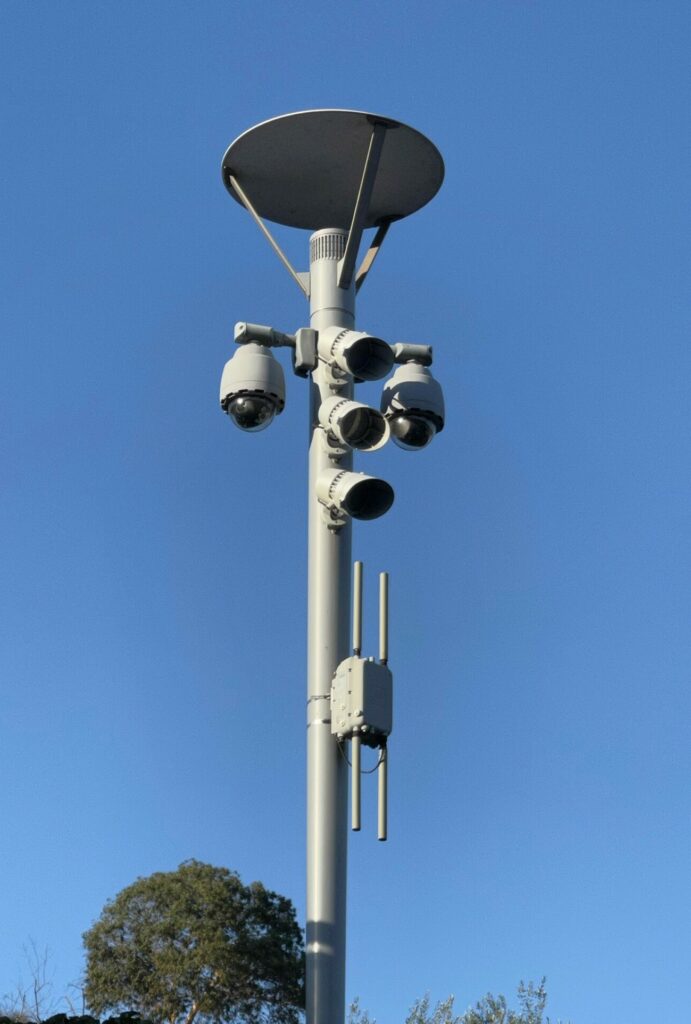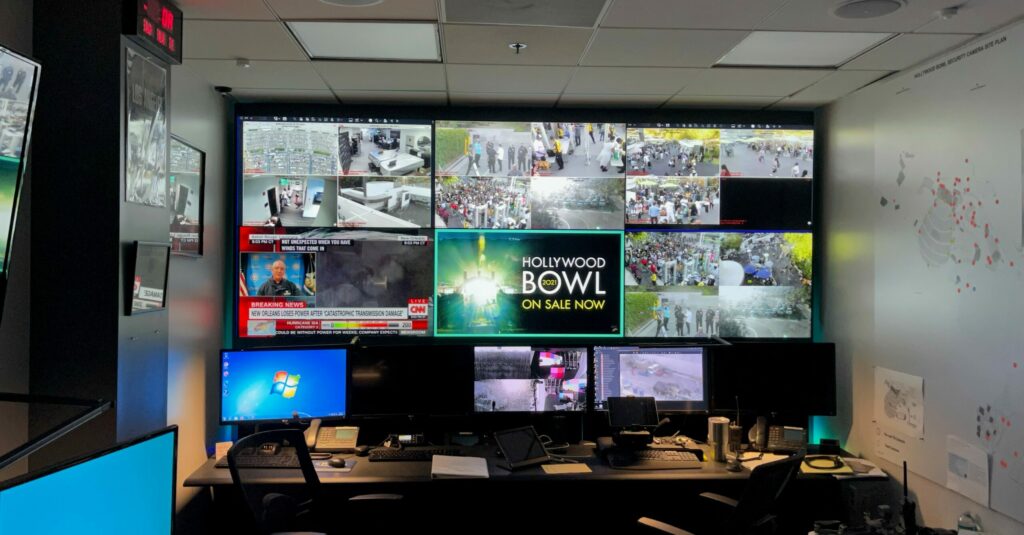Since 1922 the Hollywood Bowl has been a premier destination for live music in Southern California with performances that cross generations and genres — from classical to rock, Broadway to jazz and beyond.
For many locals and visitors a concert under the stars at the iconic amphitheater, nestled in the hills near the towering Hollywood sign, has become a summertime ritual. Home to the Los Angeles Philharmonic, the landmark venue has earned an international reputation for showcasing artistic greatness and celebrating global cultural heritage.
Through the decades, just a few of the musical giants to have graced the stage at Hollywood Bowl — performing under its distinctive bandshell arch — include Igor Stravinsky, Frank Sinatra, Judy Garland, Billie Holiday, Bob Dylan, Luciano Pavarotti, the Beatles, Jimi Hendrix, Elton John, Prince and Yo-Yo Ma.
Given the size of the grounds — at 88 acres with a maximum seating capacity near 18,000 — security has increasingly been an integral part of the venue’s evolution as a cultural landmark. Integral to ensuring the safety of personnel, patrons and performers is an advanced IP-based video surveillance solution that has taken once-antiquated analog capabilities to state-of-the-art heights.
The solution, designed and installed by a local systems integrator, will be thrust into the spotlight this concert season as the Bowl celebrates its 100th anniversary with some 34 shows running from June 11 through Sept. 29.
Legacy Gives Way to IP
The Hollywood Bowl is owned and operated by Los Angeles County Department of Parks and Recreation, and is jointly managed with the Los Angeles Philharmonic Association. In addition to the actual stage area, the Bowl provides security assistance to the surrounding park areas and surveillance of Highland Avenue, a heavily congested thoroughfare which runs adjacent to the Bowl.
Security is also provided for a few additional sister facilities, located elsewhere in Los Angeles, that are managed by the LA Philharmonic Association. All these factors — size, popularity and multiple sites — highlight a need for a comprehensive security solution that easily integrates with video surveillance, can be monitored from any location, provide support to third-party security or law enforcement and offer the necessary features for overall safety.

Todd Bermann, CEO of TAB Technical Services, has contracted his security and A/V services with the Hollywood Bowl for many years. He designed and installed the venue’s enterprise video surveillance solution, which includes 120 Illustra IP cameras.
Todd Bermann, CEO of TAB Technical Services, based in Newbury Park, Calif., has been the systems integrator for the Hollywood Bowl for 30 years, where in addition to security, his company integrates A/V, IT and digital signage. Prior to starting his own company, Bermann was the stage manager for the Bowl for 15 years.
Today, he continues to assist the venue as emergency operations manager, as well as providing them with systems and equipment. In 2018, Bermann was instrumental in updating the Bowl’s surveillance system from analog to the victor Unified Video Management Application for enterprise businesses.
The victor system allows the facility to quickly look up and extract video stored on VideoEdge NVRs. Both devices work together to provide a cohesive and collaborative video management solution, offering IP video on the edge that produces high quality images and remains easy to manage. Part of this upgrade also included the installation of 120 Illustra IP cameras.
Multifaceted Security Needs
Because the Bowl is a seasonal facility, Bermann explains his team was able to entirely switch over from analog to the new IP-based solution in the course of one winter over a four-month period.
“For a project of this magnitude, the Hollywood Bowl needed a variety of cameras, remote monitoring solutions and just a comprehensive solution that allows them to work with external security teams,” says Bermann. “There is a lot of value in victor features, such as video wall and license plate recognition [LPR] for a facility of this size.”
When most end users hire a consultant to design a camera system, they do it purely from a security standpoint. Bermann had the additional task in designing a solution that also accounts for the unique needs of the venue’s production department.
“My charge was to basically provide two systems in one. And what I mean by that is the system needed to be useful from a building security point of view — watching the buildings, watching the grounds. And another part of the system was to make it usable for the stage manager to keep an eye on movement of people during the performance. So there are two different aspects of the system,” he explains.
The venue has multiple monitoring stations, requiring a video solution accessible from multiple workstations, as well as the ability to easily share important security details and feature remote monitoring.
To cover all areas of the venue, the Bowl has a video security operations and emergency operations center, which is utilized on a nightly basis to monitor all critical areas. These areas include ticket gates, parking lots and VIP areas.
The venue also needed a solution that would enable law enforcement to access the video system during events at their dedicated monitoring station and for activities in conjunction with onsite staff. If an incident requires information to be shared with local law enforcement, the Bowl has several video monitors that security officials can view to ensure there is a clear recording.
Users can also access the system remotely on a smartphone or any mobile device, but they do have a fully remote operations system that also allows the LA Police Department and LA Fire Department to gain access, in case of a lockdown at the venue. victor’s robust levels of clearances allow these permissions to be assigned to individuals.
The system also includes a map feature, which allows Bowl staff to access cameras based on map location. Of the 120 cameras installed, approximately 80% are pan/tilt/zoom; others are fixed models with audio for possible detection of visitors, plus some fixed fisheye.

Wireless connectivity allowed for cameras to be deployed in an area of the venue with limited access and infrastructure.
TAB Technical Services has also deployed several cameras with LPR analytics, which are used when vehicles are entering the parking areas. Using LPR from victor and VideoEdge, the Bowl can effectively identify and track vehicles at all entry and exit points, while automatically capturing license plates.
This is crucial for cases when a performer provides a list of people — including known stalkers — they have restraining orders against. By utilizing LPR, security personnel at the Bowl can crosscheck plates with others existing in the database and coordinate a plan with law enforcement.
Known as the largest natural outdoor amphitheater in the country, the Hollywood Bowl is a major element to the Hollywood Hills landscape. Encircled by a state park, venue staffers perform work in conjunction with LAPD to provide surveillance clips as requested.
Victor’s clip management features help them provide vital details, as the Bowl’s surveillance system provides a 360° view of the surrounding area. Though it is a state park, after a certain time, Bowl security takes over. In addition, several cameras are placed on some of the surrounding hilltops, which are fed with fiber into the monitoring stations to offer a full aerial view of the venue.
Wireless connectivity was also utilized for a few pole-mounted cameras. The Bowl has also started a drone program to survey surrounding hillsides each day, monitoring for people illegally hiking into the area, attempting to camp out in the hills, or even lost or injured hikers.
While the area hills are public lands, the Hollywood Bowl commonly assists in monitoring for safety and security of the vicinity. This video is stored in the victor system for easy access.
Confronting Conduit Challenges
Bermann is quick with two words in describing the challenges he and his installation team faced when deploying the Bowl’s enterprise video surveillance solution: “Pretty daunting.”
Given the age of the facility and because little to no necessary infrastructure existed, TAB Technical Services deployed a whole new fiber-optic backbone system along with all-new networking equipment switches. Says Bermann, “We essentially started from scratch and then we had to get all that into a 100-year-old facility.”
Bermann leveraged every bit of his 30-year history in working at the Bowl to complete the installation. “It was definitely beneficial for me because I know that facility. For somebody to go in there cold and try to put this whole new system in it would have been pretty crazy for them.”
He explains there were no documented plans that labeled, for example, how to get cabling and other infrastructure from point A to point B. Yet with all his intimated knowledge, having spent so many years working underground and on various other systems there, he was able to draft contingency plans, accordingly.
Among his challenges was to deploy a camera on a 1,000-foot hilltop to provide a bird’s-eye view of the amphitheater. To achieve this Bermann utilized existing conduits his team had previously installed to power lighting equipment atop the peak above the venue.
“We did manage to get some fiber up there in the same conduit, but it was very difficult,” he says. Deploying cameras at the entrance to the Bowl on Highland Avenue — a state-owned road — entailed accessing underground, 50-year-old conduits to run fiber to the cameras.
“And there were some analog camera locations we just could not pull either Cat-5 or fiber,” Bermann says. “Instead, we had to utilize the existing coax by using third-party coax-to-Ethernet converters on those cameras.”

The venue has multiple monitoring stations, as well as the ability to easily share security details via remote monitoring.
Shows Must Go On
After COVID-19 forced the storied venue to scrap its 2020 season — the first full cancellation in 98 years — the Bowl resumed live performances last year, albeit at a far lower capacity of around 4,000 people.
During the 2020 shutdown, the video surveillance system remained fully operational, allowing the L.A. County Department of Parks and Recreation, as well as law enforcement, to keep tabs on the venue and surrounding areas.
Remote features of the enterprise system also allowed personnel from the Bowl to view video feeds remotely from their homes. And now with a full slate of entertainment scheduled for the venue’s 100th anniversary celebration — at full capacity — Bermann says the Hollywood Bowl’s video surveillance system is ready for its starring role once again. “It’s all systems go in 2022,” he chuckles.
The post Securing the Hollywood Bowl: How the Century-Old Venue Transitioned to IP Video appeared first on Security Sales & Integration.
